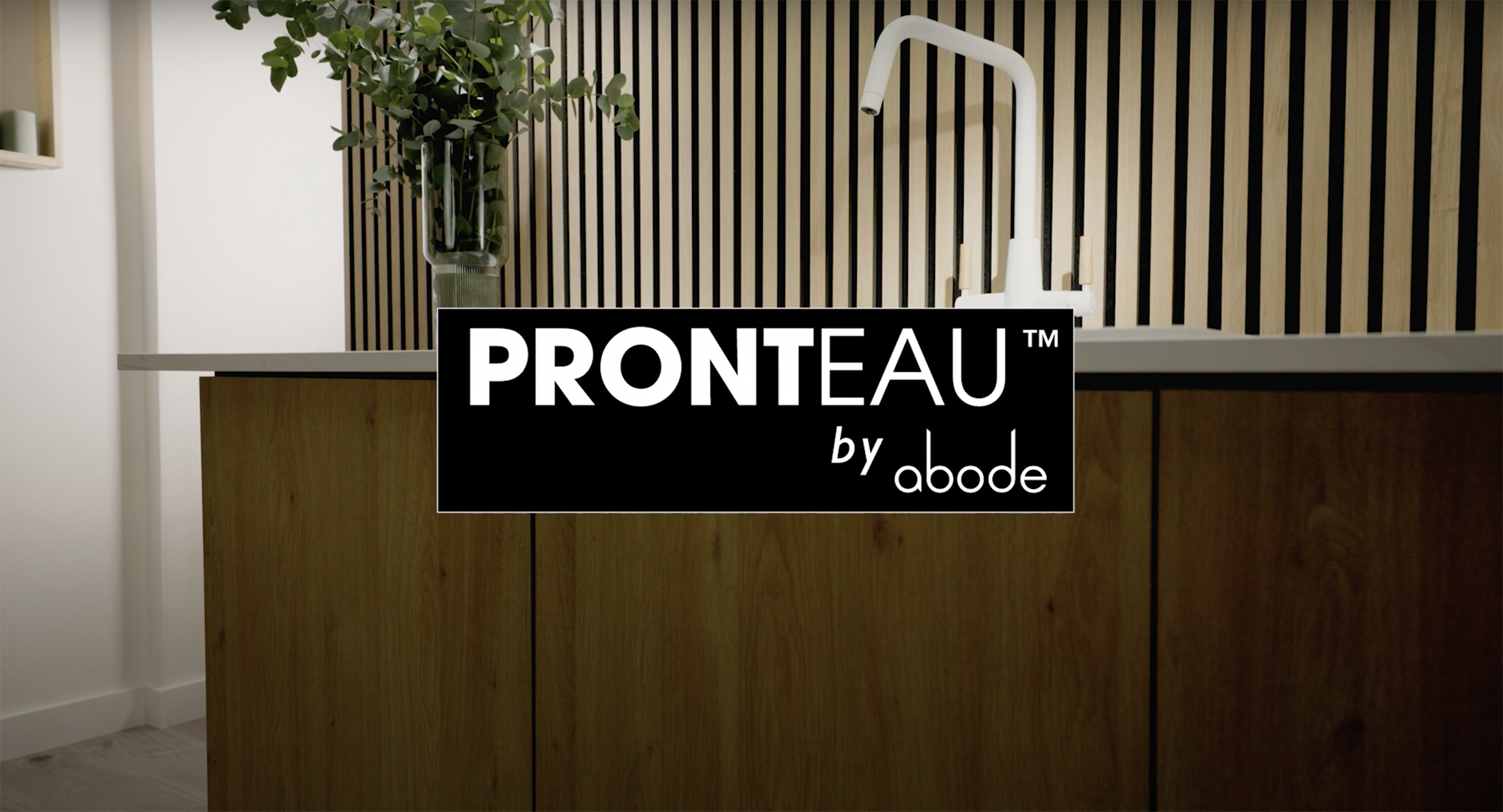How bathroom furniture has become an intrinsic part of interior architecture and is now a starting point for the design of the space
With the bathroom becoming a space dedicated to wellbeing, its aesthetics are now focused more upon creating a ‘living space’. It means the clinical lines of sanitaryware have been softened and are now integrated into bathroom furniture for a more holisitic look.

Riviera Oak from Pelipal provides warmth with textures of nature and comes in a vanity unit with wall hung drawer unit and mirror cabinet. It boasts a black inlay trim, which is complemented by a black towel rail and brassware.
Pelipal national development manager of InHouse Inspired Room Design Steven Jacques states: “Previously, bathroom furniture used to be an add-on, but is now a primary product and we’ve seen a tremendous increase in demand for storage solutions.”
Sponsored Video
And marketing and retail sales director at Symphony Group Simon Collyns agrees: “Bathroom furniture plays a vital role within the architecture of the room over and above storage.
“The style needs to be carefully considered and will ultimately determine the way the room looks and feels.”
In fact, such has been the significance of cabinetry in a bathroom project, sales and marketing director at RAK Ceramics Ben Bryden says many consumers will begin their bathroom refurbishment by choosing the furniture first.
Cabinetry is certainly is getting greater design attention, and therefore industry experts believe it will become a greater ratio of the overall spend on a bathroom.
It’s really no surprise, then, distributors and manufacturers are jostling for a greater slice of the action.
Most recently, Ideal Bathrooms has started to offer furniture from BagnoDesign and Roca has acquired Spanish bathroom furniture manufacturer Royo to enhance its competences in the sector.
Customisable cabinets
Equally it’s not a revelation that modular units, with their inherent ability to create the illusion of space, are the most popular choice of furniture.
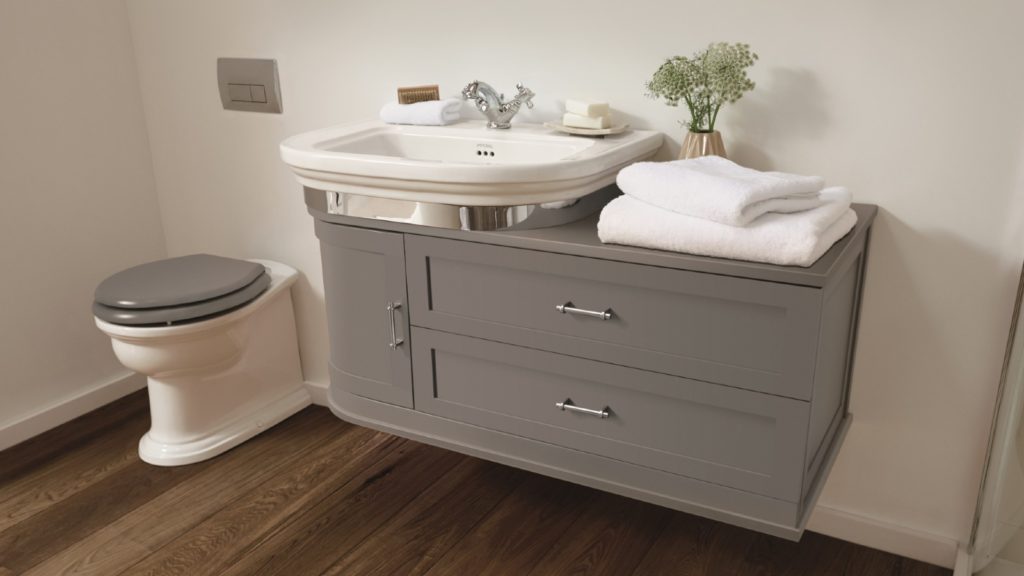
Thurlestone furniture from Imperial Bathrooms, such as the offset vanity unit, comes in a range of painted or hand-oiled options. It combines traditional manufacturing techniques with soft-close door hinges.
Vanities and tall units have also been joined by open shelves to further create a visual lightness in the room.
Creative director of Imperial Bathrooms James Stevenson comments: “Our customers are increasingly telling us that homeowners are wanting to put a personal spin on bathroom schemes and have woken up to the power of ‘statement pieces’ as a great way to provide storage and unique style identity.
“In my view, nothing elevates a design more than a beautifully crafted single or double vanity unit.”
And this is why bathroom storage is now available in a wide choice of styles, colours and textures.
Joining high or matt gloss handleless styles in a variety of colours are more traditional Shaker-esque styles in painted finishes, and there’s even an injection of woodgrain and stone effects to bring nature and warmth into the space.
National sales manager for Rehau Scott Williams says: “A playful pairing of traditional design and modern furnishings is really coming through this year, maintaining a homely environment that offers a contemporary edge.
“This can be achieved through the pairing of natural materials in the bathroom, such as stone and wood-effect surfaces.”
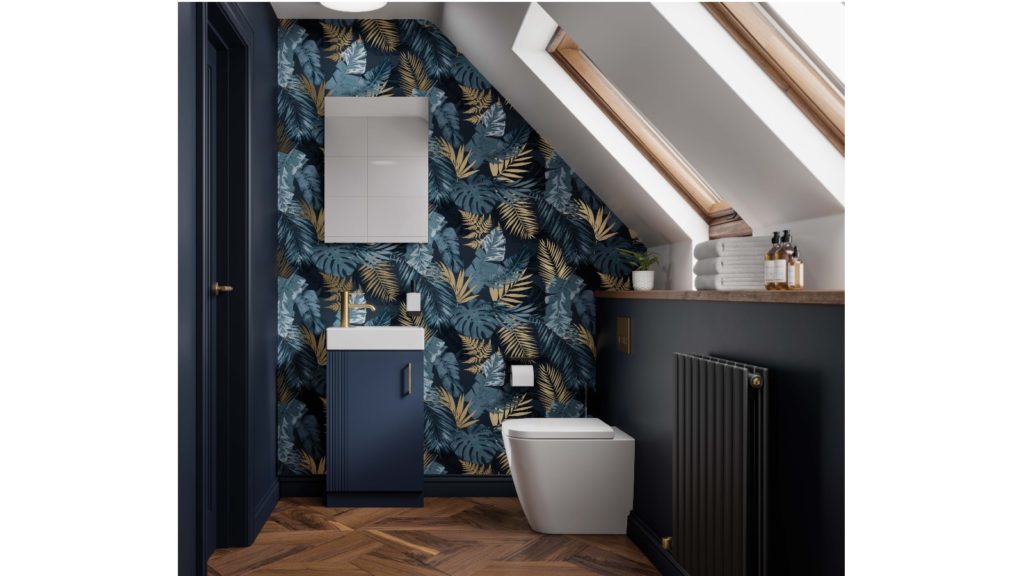
Extending the HiB Novum collection of furniture is Fabrica, which comes in Dark Emerald, Midnight Blue and Carbon Grey, with handles and brassware in Brushed Brass, Black and Chrome.
While sales director of HiB Ash Chilver says the wider choice allows for greater personalisation, commenting: “As customers start to see the space as a room to enjoy rather than just utility, they have incorporated more interior design trends into their bathroom projects, resulting in a surge in demand for different styles, colours and finishes.
“Now more than ever we are seeing a need for customisable furniture with a wider palette of colour options and interchangeable finishes and details such as handles, brassware and accessories to suit individual design.”
Improving hygiene
Interestingly, furniture will also see developments in design to improve the level of hygiene in the bathroom space.
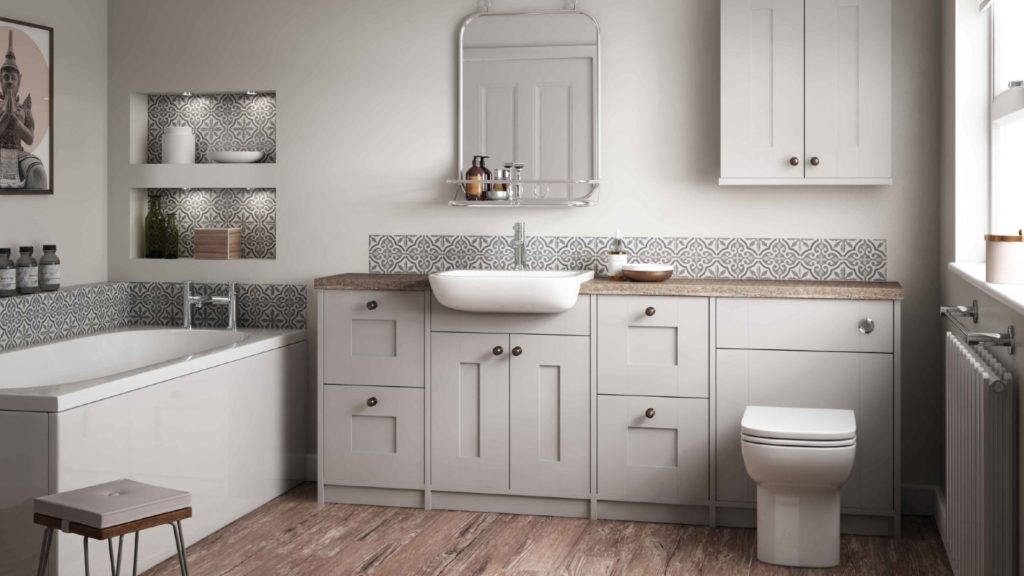
Part of the Aquadi bathroom furniture collection, from the Symphony Group, is the traditional-style Valencia range. It features Shaker-style doors and comes in a choice of Ivory and Platinum
National sales manager for Rehau Scott Williams point outs: “Surfaces which are easy to keep clean, such as non-porous options that don’t harbour bacteria, are growing in popularity.”
And he adds: “There is an increasing awareness about wiping down surfaces, emphasising the importance of edge banding which uses zero-joint technology to prevent the culmination of germs along edges.”
Regional marketing manager Europe for VitrA Margaret Talbot agrees hygiene will play a greater role in bathroom furniture design, as she also points out: “Reducing touchpoints with soft close and open drawers and doors will be on the checklist.”
Essential storage
Of course, the requirement for furniture is not focused solely on aesthetics to create a ‘living space’ but also the practicalities of concealing clutter to maintain a cleanlined retreat.

Designed to bring colour into the bathroom RAK-Resort from RAK Ceramics is available in five colours, including Denim Blue. The wall-hung range comes in a choice of five unit options, plus a corner unit.
“Storage remains the key driver”, states head of marketing at Utopia Bathrooms Helen Clark, talking about the key reason for furniture sales.
She adds: “Indeed, for many, storage space is simply taken for granted now, a necessity rather than a luxury.”
And she says this has particularly been important over the past year, when the bathroom has been used as a place of escape “As we’ve all spent more time at home in the last 12 months, we focus on the house being our haven and the bathroom in particular being the place where we can relax and unwind.
“That’s pretty impossible to do if you have an untidy, cluttered bathroom that no-one realistically wants to spend time in.”
It has also been highlighted by the popularity of organising consultant, author and TV presenter Marie Kondo who highlights every belonging should have a personal space.
Scott Williams of Rehau Furniture Solutions adds: “Consumers want their bathroom to be well thought out and truly functional.”
And storage is not dependent on the size of the space. It is as much a requirement for the cloakroom as it is for the main bathroom, in fact, possibly more so, as there are greater demands of smaller spaces.
As second or third bathrooms are squeezed in the family home, without any increase of the average dwelling footprint, it’s easy to see how there is going to be even greater requirements for storage in the future.
Integral architecture
But furniture is set to evolve from simply offering cabinetry to stow away goods, to become the basis of bathroom architecture.
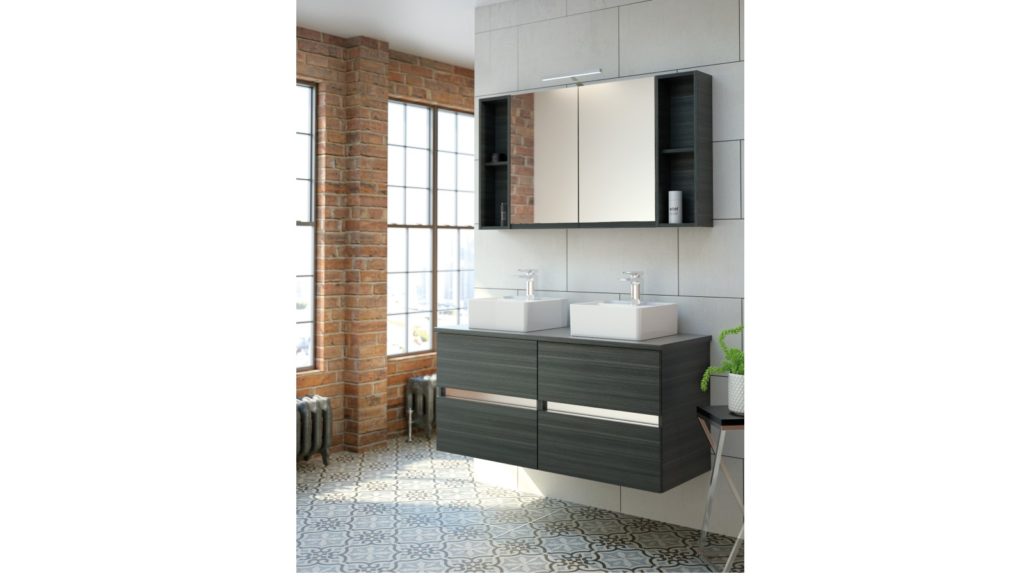
Qube is a range from Utopia Bathrooms which comprises wall-mounted and freestanding bathroom furniture. Designers can choose from seven finishes which can be mixed and matched, and used with optional open shelves.
As such, it will not only provide storage but it will be commonplace for cabinetry to be a focus for lighting and even entertainment.
Ash Chilver of HiB continues: “Suitable lighting, Smart facilities and the ability play media and music will encourage people to spend more time in the bathroom and having these features integrated in bathroom furniture, including cabinets, is a discreet way of ensuring maximum functionality without additional clutter.”
And Steven Jaques of InHouse Inspired Room Design agrees, pointing out: “Year ago, innovation for the bathroom was a wall cabinet to conceal the shaver plug. Now these needs are continuously developing – cosmetic drawers, lighting that illuminates the floor with motion sensors, music sound modules with Bluetooth connectivity, lighting combined with mirror elements, materials and finishes, colours and textures.”
He concludes: “Obviously it’s a personal choice and the sales we see reflect that customers are drawn to bathroom furniture that reflects their personality – in a similar way to other living space in their home. It’s not just about function anymore.”
